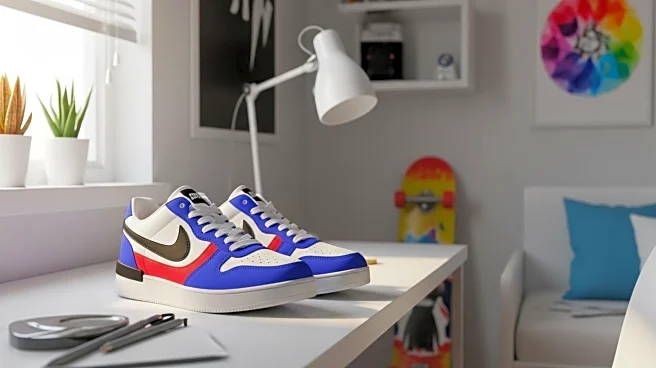What's Happening?
As the back-to-school season kicks off in the United States, Nike's dominance among school-aged children and teenagers has notably decreased. According to a survey conducted by investment bank Stifel, Nike's market share among U.S. sneaker retailers has dropped from 88% two years ago to 38% this year. Brands like New Balance and Adidas have gained popularity, with On and Hoka also capturing some of the market share. This shift indicates a change in consumer preferences among Gen Alpha, who are moving away from Nike's previously stronghold in the sneaker category. Additionally, American Eagle and Hollister are competing fiercely in the clothing sector, with American Eagle gaining attention through collaborations and advertising campaigns.
Why It's Important?
The decline in Nike's popularity among American teens could have significant implications for the brand's market strategy and financial performance. As competitors like New Balance and Adidas gain traction, Nike may need to reassess its approach to appeal to younger consumers. This shift also highlights changing trends in the fashion industry, where traditional brand loyalty is being challenged by new entrants and collaborations. Retailers and brands must adapt to these evolving preferences to maintain their market position. The competition between American Eagle and Hollister further underscores the dynamic nature of the fashion retail sector, where innovative marketing strategies are crucial for success.
What's Next?
As the back-to-school season progresses, retailers and brands will likely continue to monitor consumer trends and adjust their strategies accordingly. Nike may explore new marketing campaigns or product innovations to regain its market share among Gen Alpha. The upcoming discussions by American Eagle executives regarding recent collaborations and advertising campaigns will provide insights into their strategic direction. Additionally, the luxury fashion industry is preparing for a series of brand relaunches and debuts, which could influence market dynamics and consumer preferences in the coming weeks.












